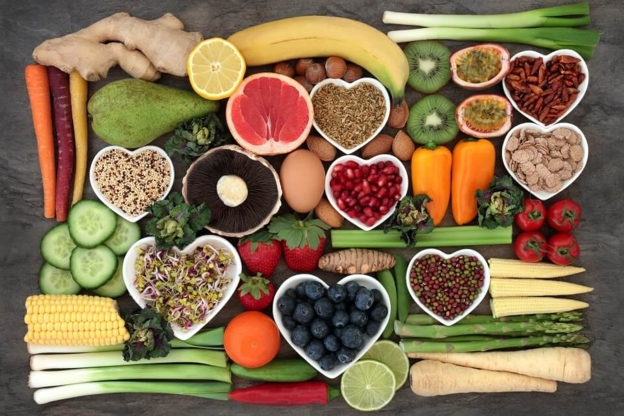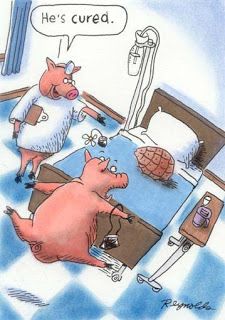|
Kenneth Davis

T H O U G H T F O R C O N S I D E R A T I O N
Diabetes mellitus is due to a deficiency of the internal secretion of the pancreas. The main principle of treatment is, therefore, to correct this deficiency. Insulin is not a cure for diabetes; it is a treatment. It enables the diabetic to burn sufficient carbohydrates so that proteins and fats may be added to the diet in sufficient quantities to provide energy for the economic burdens of life.
~Frederick Banting~

“YOU ASK, WE MAKE AN HONEST ATTEMPT TO DELIVER”
WELLNESS WEDNESDAY

What Are Artificial Sweeteners? And Why They're in Your Food
Moderation is key when it comes to these sugar substitutes, nutritionists say.
By Melissa Fiorenza Published on March 24, 2022

When it comes to artificial sweeteners, chances are, you're in one of two camps. You either shun any low-calorie food product that boasts it's "artificially sweetened," or you have no problem tossing Splenda into your morning coffee. According to Statista Research Department, 141.18 million Americans used sugar substitutes in 2020. But, artificial sweeteners have long been a hot topic in the nutrition industry. (Remember when saccharin was deemed carcinogenic in the 1970s? Subsequent studies, according to the NIH, haven't provided clear evidence of that association, so the verdict is out.) Here's everything you need to know about artificial sweeteners, what they're used for in common foods, and what consuming them can be doing to your body.
First of all, what exactly are artificial sweeteners?
Artificial sweeteners are sugar substitutes that mimic the taste of sugar and have very little or no calories. "They are synthetically made and are hundreds of times sweeter than regular sugar," says Kaytee Hadley, RD, a functional medicine dietitian and founder of Holistic Health and Wellness. How much sweeter? According to the FDA, sucralose (aka Splenda) is 600 times sweeter than sugar. Neotame, sold under the brand name Newtame, is a whopping 7,000 to 13,000 times sweeter than table sugar. (Because of this, only a very small amount is needed to sweeten foods and drinks.) In addition to sucralose and neotame, the following non-nutritive sweeteners are also approved by the FDA: aspartame, saccharin, acesulfame potassium (Ace-K), and advantame.
Which foods contain artificial sweeteners?
Sugar substitutes are used to replace corn syrup, sugar, or other sweeteners to appeal to consumers who are looking for lower calories or low-sugar products, says Hadley. "They also cost a fraction of the price of natural sweetener, so manufacturers use them to keep their costs down." Artificial sweeteners are most commonly found in foods and drinks including: Diet sodas, Diet teas, Energy drinks, Protein powders, Sugar-free candies, Yogurt Puddings, Sugar-free condiments like ketchup, Sugar-free jelly and jams, Baked goods....
What's the latest industry opinion on artificial sweeteners?
"They are generally seen as favorable by nutrition professionals," says Molly Hembree, MS, RD, LD, a registered dietitian, retail dietitian coordinator for Kroger, and member of Eat This, Not That's Medical Expert Board. "They are recognized as an appropriate alternative to sugar (including syrups, molasses, honey, etc.) to lower total calories of a product and to be more suitable for some people like diabetics." That said, artificial sweeteners taste bitter to some people and may increase thirst, she adds. "It's suspected that artificial sweeteners may mildly disturb the gut microbiome, but more research is needed."
Are artificial sweeteners harmful in any way?
Artificial sweeteners are approved as a food additive or considered GRAS (Generally Recognized As Safe), explains Hembree. They do, however, have an established "Acceptable Daily Intake" (ADI), meaning we should not be exceeding a certain amount on any given day. "Examples of these levels are 50 milligrams aspartame per kilogram of body weight (the equivalent of 75 tabletop packets of Equal for a 132-pound person) and 5 milligrams sucralose per kilogram of body weight (the equivalent of 23 tabletop packets of Splenda for a 132-pound person)."
Some studies have shown that artificial sweeteners can negatively affect your gut health and microbiome, says Brittany Dunn, MS, RDN, CD, a performance dietitian at Real Salt Lake and member of the Eat This, Not That! Medical Expert Board. "While other studies show that the use of artificial sweeteners can contribute to short-term weight management because it reduces overall caloric intake, there are plenty of studies that explain that participants who consistently use artificial sweeteners have a higher body weight." There are also sugar alcohols—erythritol, mannitol, sorbitol, and xylitol—that are used as artificial sweeteners, adds Dunn. "These are a mixture of sugar and alcohol molecules that can be naturally found in fruits and vegetables. Because sugar alcohols are partially absorbed, they do offer calories, but still not as much as traditional table sugar. Sugar alcohols do differ from the artificial sweeteners mentioned above. The most common side effect of sugar alcohols, when eaten in excessive amounts, is the possibility of bloating and diarrhea."
The verdict on artificial sweeteners
Like with most things, moderation is key. "When considering products containing artificial sweeteners, pay attention," says Dunn. "While there may be potential health benefits, artificial sweeteners are not the end-all-be-all to solving health concerns and should be consumed in moderation, if at all."

ADDENDUM
- Aspartame is an artificial non-saccharide sweetener 200 times sweeter than sucrose and is commonly used as a sugar substitute in foods and beverages. It is a methyl ester of the aspartic acid/phenylalanine dipeptide with the trade names NutraSweet, Equal, and Canderel.
- Sucralose, known by the brand name Splenda is a no-calorie sweetener that can be used to lower one’s intake of added sugars while still providing satisfaction from enjoying the taste of something sweet. While some types of sweeteners in this category are considered low-calorie (e.g., aspartame) and others are no-calorie (e.g., sucralose, monk fruit sweeteners and stevia sweeteners), collectively they are often referred to as sugar substitutes, high-intensity sweeteners, nonnutritive sweeteners or low-calorie sweeteners. Like other no-calorie sweeteners, sucralose is intensely sweet. It is about 600 times sweeter than sugar, so only small amounts of sucralose are used to match the sweetness provided by sugar. Sucralose is permitted by the U.S. Food and Drug Administration (FDA) for use as a general-purpose sweetener, meaning it can be used as an ingredient in any type of food or beverage. Sucralose is exceptionally stable, so foods and beverages sweetened with sucralose stay sweet under a wide range of conditions. This includes frozen foods like ice cream and other frozen desserts, as well as foods that need to be heated to high temperatures, like baked goods and foods that require sterilization. However, a recipe that uses sucralose in place of sugar may turn out slightly different because, in addition to sweetness, sugar plays several roles related to volume and texture in recipes but varies based on the type of recipe.
- Another sweetener that has gained popularity recently is stevia. Stevia-based products are not based on sugar at all, but rather from the plant Stevia rebaudiana. Known simply as yerba dulce in its native South America, stevia is being explored as a relatively new sweetener option. The sweetness in stevia comes from natural compounds called steviol glycosides, which are extracted from the plant to create various sweeteners. Like Splenda, steviol glycosides are non-nutritive sweeteners, meaning they provide no dietary calories. These stevia extracts are 200-400 times sweeter than table sugar. Extracts of stevia which are 95 percent steviol glycosides are generally recognized as considered safe (GRAS) by the FDA. Products containing steviol glycosides are usually referred to as the sweetener “stevia,” rather than the plant itself.
|